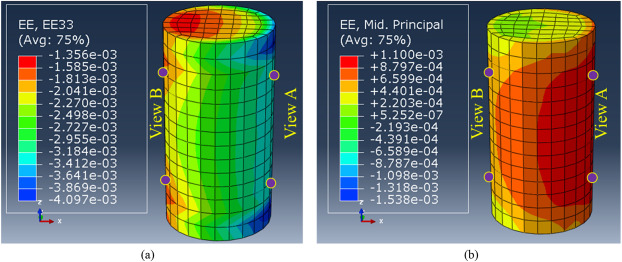JRMGE / Vol 13 / Issue 5
Sources of variability in laboratory rock test results
Rashid Geranmayeh Vaneghi, Seyed Erfan Saberhosseini, Arcady V. Dyskin, Klaus Thoeni, Mostafa Sharifzadeh, Mohammad Sarmadivaleh
Show More
a WA School of Mines: Minerals, Energy and Chemical Engineering, Curtin University, Kalgoorlie, WA, 6430, Australia
b Northern Star Resources, Kalgoorlie, WA, 6430, Australia
c Science and Research Branch, Islamic Azad University, Tehran, Iran
d School of Civil, Environmental and Mining Engineering, The University of Western Australia, Crawley, WA, 6009, Australia
e Centre for Geotechnical Science and Engineering, The University of Newcastle, Callaghan, NSW, 2308, Australia
f WA School of Mines: Minerals, Energy and Chemical Engineering, Curtin University, Kensington, Perth, WA, 6151, Australia
2021, 13(5): 985-1001. doi:10.1016/j.jrmge.2021.03.007
Received: 2020-11-03 / Revised: 2021-01-20 / Accepted: 2021-03-07 / Available online: 2021-04-18
2021, 13(5): 985-1001.
doi:10.1016/j.jrmge.2021.03.007
Received: 2020-11-03
Revised: 2021-01-20
Accepted: 2021-03-07
Available online: 2021-04-18
Appropriate rock characterization is beneficial in providing a reliable judgment on rock properties which is crucial for the design process of rock engineering applications. However, it can be difficult to obtain consistent mechanical parameters due to substantial variations in rock properties. In this research, uniaxial compression tests on dolerite specimens collected from a gold mine in Western Australia showed substantial scatter in the results. Rock categorization based on the P-wave velocities is as accurate as the thin section analysis, which suggests that they can be used together to gain a more accurate initial understanding of the rock types before any laboratory testing. The quality of specimen preparation and rock–machine interaction greatly affect the test results. For instance, non-parallelness of loading platens can lead to considerable scatter of the testing results, which would be perceived as rock variability. It is suggested that the current testing standards should be modified towards a better control of the loading machine performance and equipment precision. Finally, the possibility of pre-existing microcracks in rock, neither detected by the thin section analysis nor by the ultrasonic measurement, must be examined by computed tomography (CT) scanning as they can affect the test results. This study will enhance our knowledge about the sources of variability in laboratory test results of rock which is essential for obtaining reliable data.
Keywords: Rock property variation, Uniaxial compressive strength (UCS), Specimen preparation, End flatness, Loading equipment precision, Pre-existing microcrack
Article Data
Author(s) Information
Dr. Rashid Geranmayeh Vaneghi
r.geranmayeh@postgrad.curtin.edu.au

Rashid Geranmayeh Vaneghi obtained his BSc and MSc degrees in Mining Engineering from Sahand University of Technology and Tarbiat Modares University of Iran in 2007 and 2010, respectively. He has then worked as rock mechanics and tunnel engineer for about 8 years with consultant and contractor companies in 6 different projects in the areas of rock mechanics, mechanized and conventional tunneling. He joined Curtin University and commenced his PhD in 2016 after being awarded two scholarships of Mining Research Institute of Western Australia (MRIWA) in 2015 and Curtin Strategic International Research Scholarship (CSIRS) in 2016 for his research on progressive damage mechanisms of rocks subjected to cyclic loading. During his PhD study, he has published several journal papers in his research area. He is currently working as an underground geotechnical engineer at the KCGM gold mine, WA, Australia. His research interests include rock fatigue, rock fracture mechanism, ground support corrosion, and hard rock tunneling.

